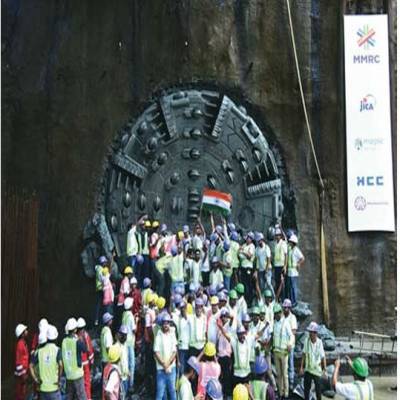HCC completes first tunnel for Mumbai Metro-III project
01 Sep 2019

Hindustan Construction Company (HCC) emerged as the sole contractor among all packages to finish the entire length of a tunnel after it completed the south bound tunnel between CST and Mumbai Central stations.
As communicated by the company, the construction team built the 3.82-km tunnel in tough geological and urban conditions. These included the proximity of the project to the sea; the fact that the land to be tunnelled through was heterogeneous reclaimed area; congested working areas; and the need to leave buildings (most over 100 years old) undisturbed while tunnelling directly below them.
MMRCL had awarded the contract to HCC in July 2016, for the design and construction of twin tunnels by tunnel-boring machine (TBM) method and the construction of four underground metro stations, including one at CST.
Two TBMs were procured from China with 117-m-long, single-shield, dual-mode hard rock with a 6.68 m diameter and weighing around 848 mt. They are equipped to operate in both open and closed mode, in the predominantly fresh and slightly to moderately weathered basalt and breccia anticipated in the Mumbai Metro project. After months of geotechnical investigations, planning and a lengthy procurement phase, the HCC team launched Vaitarna I (the first TBM) from the project site at CST on December 04, 2017. This TBM requires around 32 people to operate, which includes operators, engineers and labourers.
As the alignment of the tunnel passes through one of Mumbai’s most thickly populated residential areas, a thorough geological survey was conducted along the entire stretch of the project. Prior to tunnelling, a structural survey was carried out across a 30-m influence zone on either side of the alignment to assess the impact of tunnelling on the buildings.
The construction of station buildings is currently underway. While all the station buildings are unique in design, the CST station is a completely cut-and-cover station; the remaining three stations will be made by NATM method. Vaitarna II was launched in February 2018 and is expected to complete its tunnelling by December 2019.
Related Stories

